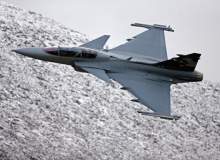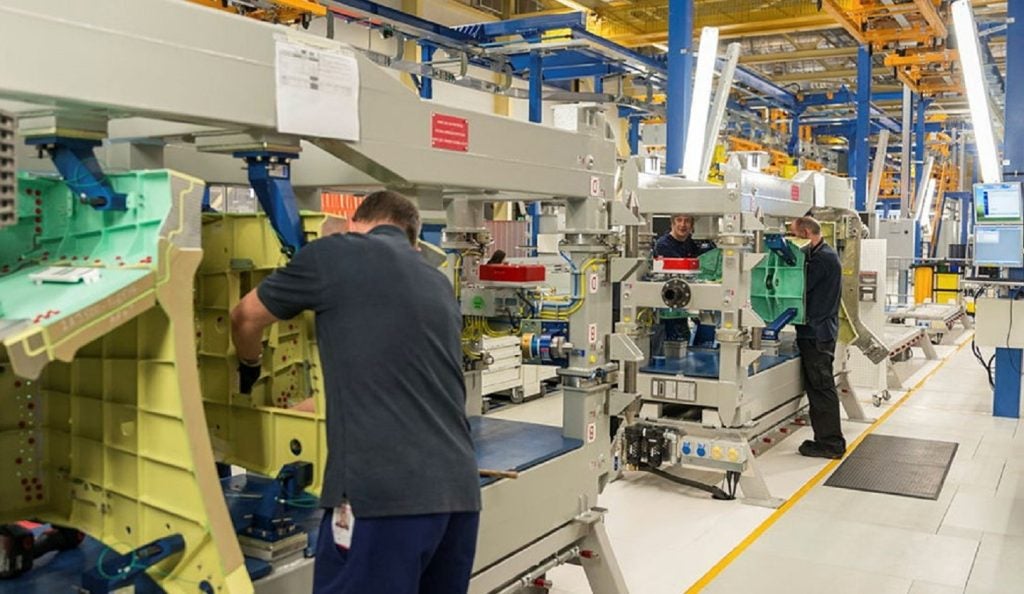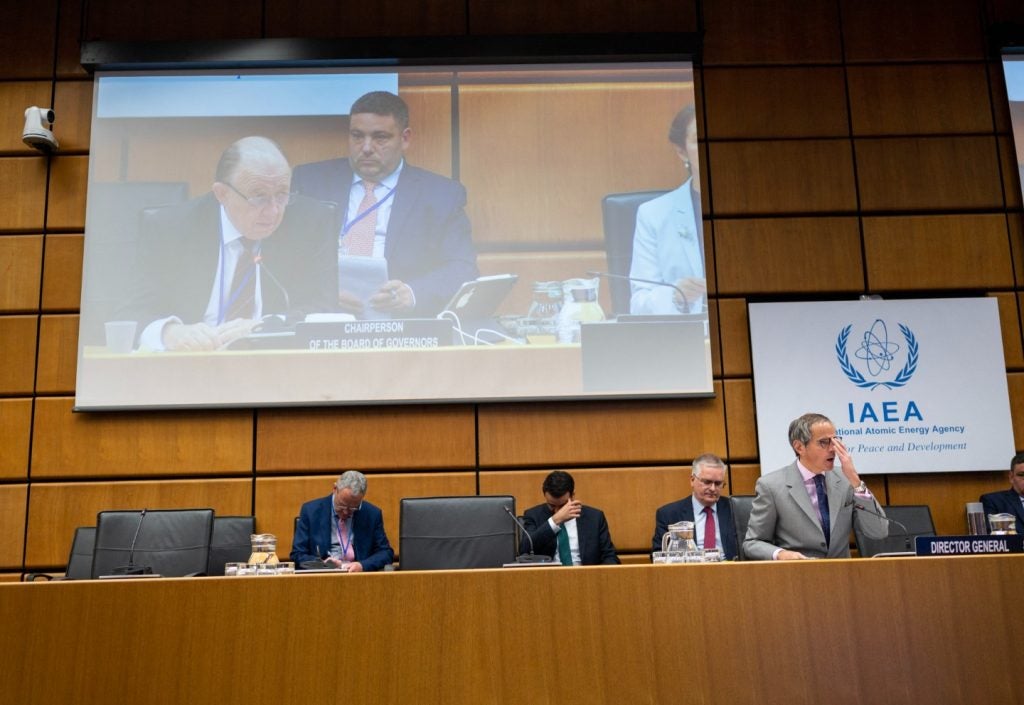

On 18 May voters in Switzerland will be asked whether they want their government to fund 22 new Gripen fighter jets from Sweden. For Saab, the manufacturers of the Gripen, nearly $3bn hangs in the balance; meanwhile the Swiss Air Force urgently needs to replace an ageing fleet of Northrop F-5E and F-5F fighters built back in the 1970s.
"The Swiss F-5E and F-5F have not undergone any modernisation," explains professor Alexandre Vautravers, an associate fellow at the Geneva Centre for Security Policy (GCSP) and editor-in-chief of Revue Militaire Suisse. "The F-5s that are currently flying are basically the same aircraft that were purchased in 1979. I don’t think people are completely aware of that."
Vautravers says the F-5 fighters also lack key capabilities such as Link 16, which enables forces to exchange vital tactical data via networks. "For the kind of missions and engagements that are required today, in difficult conditions and where intervention is needed rapidly, this aircraft is no longer up to date," he adds.
Upgrading existing F-5 fighters is likely to cost as much as buying new aircraft and buying used F/A-18 Hornets, which the Swiss Air Force already operates, is probably not possible. So the Swiss Government has decided that buying a brand-new, yet affordable, aircraft is the only option.
How well do you really know your competitors?
Access the most comprehensive Company Profiles on the market, powered by GlobalData. Save hours of research. Gain competitive edge.

Thank you!
Your download email will arrive shortly
Not ready to buy yet? Download a free sample
We are confident about the unique quality of our Company Profiles. However, we want you to make the most beneficial decision for your business, so we offer a free sample that you can download by submitting the below form
By GlobalDataGripen fulfills all the Swiss Air Force’s requirements, especially for air defence, and is a ‘rational choice’ for the country, Vautravers insists.
The Swiss Parliament approved the Gripen procurement last September with a majority vote. Lawmakers from both houses also passed the Gripen Fund Law setting money aside for the 22 jets. And it is a big chunk of money. Switzerland wants to buy the very latest model of the jet, designated the Gripen E, which is still in its early production phase.
The Gripen E – ‘doing almost everything better’
Soldiers, sailors and airmen could soon be working together to fight huge, highly realistic battles online.
The next-generation Gripen E will offer ‘significant’ performance improvements over older fighters, claims Saab. Improvements include a new, more powerful engine, greater range and advanced on-board sensors and avionics. The Gripen E will also have ten external pylons under the wings and fuselage enabling the fighter to carry more weapons than was possible on older variants.
Swiss industry will be a major stakeholder in the aircraft. Saab has previously indicated that it wants 35% of Gripen E parts to be made in Switzerland, including the rear fuselage, pylons, tail cone and air breaks. In March 2014, Saab awarded Swiss technology firm RUAG a $77.2m contract to produce payload mountings for the Gripen.
A lot of buzz currently surrounds the new Gripen (also known as the JAS 39E) with some experts even suggesting it is a ‘sixth generation’ fighter in terms of capability.
"It is not the world’s fastest, most agile or stealthiest fighter. That is not a bug, it is a feature," writes Bill Sweetman in March’s Aviation Week. "The requirements were deliberately constrained because the JAS 39E is intended to cost less to develop, build and operate than the JAS 39C, despite doing almost everything better."
For many air forces around the world, the single-engine Saab Gripen has proven to be a low-cost but highly capable alternative to expensive twin-engine aircraft such as the Eurofighter Typhoon, Dassault Rafale and Boeing F/A-18 Hornet. On 18 December2013, Brazil announced it would be buying 36 next-generation Gripen fighters to replace an ageing fleet of French Mirage jets. That deal is estimated to be worth around $4.5bn and will add Brazil to the growing list of Gripen customers which includes Sweden, the Czech Republic, Hungary, South Africa and Thailand. If the Gripen Fund Law is passed in May’s referendum, Switzerland will also join that list.
There are, however, hurdles to overcome before the Swiss Air Force begins flying a fleet of new Gripen fighters.
Buying defence equipment, the Swiss way
In a uniquely Swiss tradition dating back to 1848, a major law approved by the government can go to a referendum if 50,000 people sign a petition. Unfortunately for Sweden and Switzerland, 100,000 people signed a petition on the Gripen deal, triggering a referendum.
"The frequency with which [referendums] are used in Switzerland is certainly much higher than in all other developed democracies," explains Silja Häusermann, a professor of political science at the University of Zurich. "At a federal level we vote [in a referendum] four times a year and each time there are around three to six issues on which people can vote."
When people vote on the Gripen Fund Law in May, they will also be voting on a diverse range of other issues including the introduction of a minimum wage, a lifetime ban on paedophiles working with children and a constitutional amendment on the status family doctors.
The last time Swiss citizens voted on the procurement of military aircraft was twenty years ago. In 1993, a referendum was called to decide whether the Swiss Air Force should be equipped with 34 new F/A-18 Hornet from the US. Like with the Gripen today, the procurement of fighter jets was controversial, but Swiss voters eventually voted in favour of the deal with a majority of 57%.
A recent survey conducted by polling firm Leger and published in the sensationalist Swiss newspaper SonntagsBlick showed Swiss voters are likely to reject the current deal. Out of 1,000 people questioned, around 62% of respondents said they would vote ‘no’, while 32% said they would vote in favour. Under Swiss law, the results of a referendum cannot be overturned by the government.
"No means no," says Häusermann. "This is binding, this is not a consultation."
Interfering and influencing – Saab’s controversial involvement
Newly released documents show the US is set to spend billions of dollars on a new generation of stealth bombers.
As the recent Leger poll shows, the Gripen deal does have its detractors. In January, a member of the Swiss Parliament claimed that Saab had been interfering in the referendum and trying to influence its outcome. Swiss Social Democratic MP Evi Allemann accused Saab of quietly funding the pro-Gripen campaign.
"We don’t have any clear rules for referendum campaigns, as a result, foreign companies feel they can shamelessly get involved in national decisions," she was quoted as saying by Swedish news website The Local.
While not illegal, Saab’s activities have not gone down so well with the Swiss public, especially with local campaign groups against the deal. "The financing of the pro-Gripen campaign must be disclosed," wrote the Alliance Against New Fighter Jets on its website. "Otherwise, it can be assumed that a substantial part of the campaign is funded by Saab."
The anti-Gripen alliance, whose slogan "Nein zu den Kampfjet-Milliarden" encourages voters to veto the multi-billion Gripen procurement plan, has already amassed nearly 11,000 ‘Likes’ on its Facebook page and even offers merchandise, including T-shirts for a small donation. The campaign also incorporates a significant amount of anti-war rhetoric. One of the main issues for the alliance is that the new Gripen fighter will have the capability to bomb ground targets with smart bombs. The billions of dollars spent on a new fighter jets and bombs are better spent on education or hospitals, say the activists. But anti-war sentiment is nothing new for Switzerland.
"The military and the budget for the military has always been a controversial issue," says University of Zurich’s Häusermann. "I think it’s really no surprise that there will be a referendum on [the fighter jets]. It is a highly contested question whether Switzerland needs these new jets, it is a question whether Switzerland needs an army altogether."
There is still a little more than a month to go before the vote, but what happens if the Swiss people eventually say no? Two possible outcomes include a loss of revenue for Swedish and Swiss industry and a continuing decline in Swiss Air Force capabilities. But a rejection of the Gripen Fund Law does not necessarily mean the Gripen will not be purchased in the future, suggests GCSP’s Vautravers.
What if Swiss voters reject the Gripen deal?
"It does not mean that other agreements cannot be concluded in terms of leasing Gripen aircraft. It will probably lead to a different arrangement for the renewal of the Swiss Air Force and the modernisation of the Swiss Army. But there will definitely be solutions sought," he adds.
When asked what contingency plans Saab has in place if the Swiss people reject the Gripen deal, a spokesman said the company would not speculate on the outcome, adding: "We are not part of this campaign as it is a domestic issue. We are part of procurement programmes all over the world and sometimes there is a customer buying a product and sometimes there is not. Our track record to date is we have won 50% of competitions and we aim to sell 300 to 450 Gripen over the next 20 years."
Follow Grant Turnbull on Google+



.gif)



